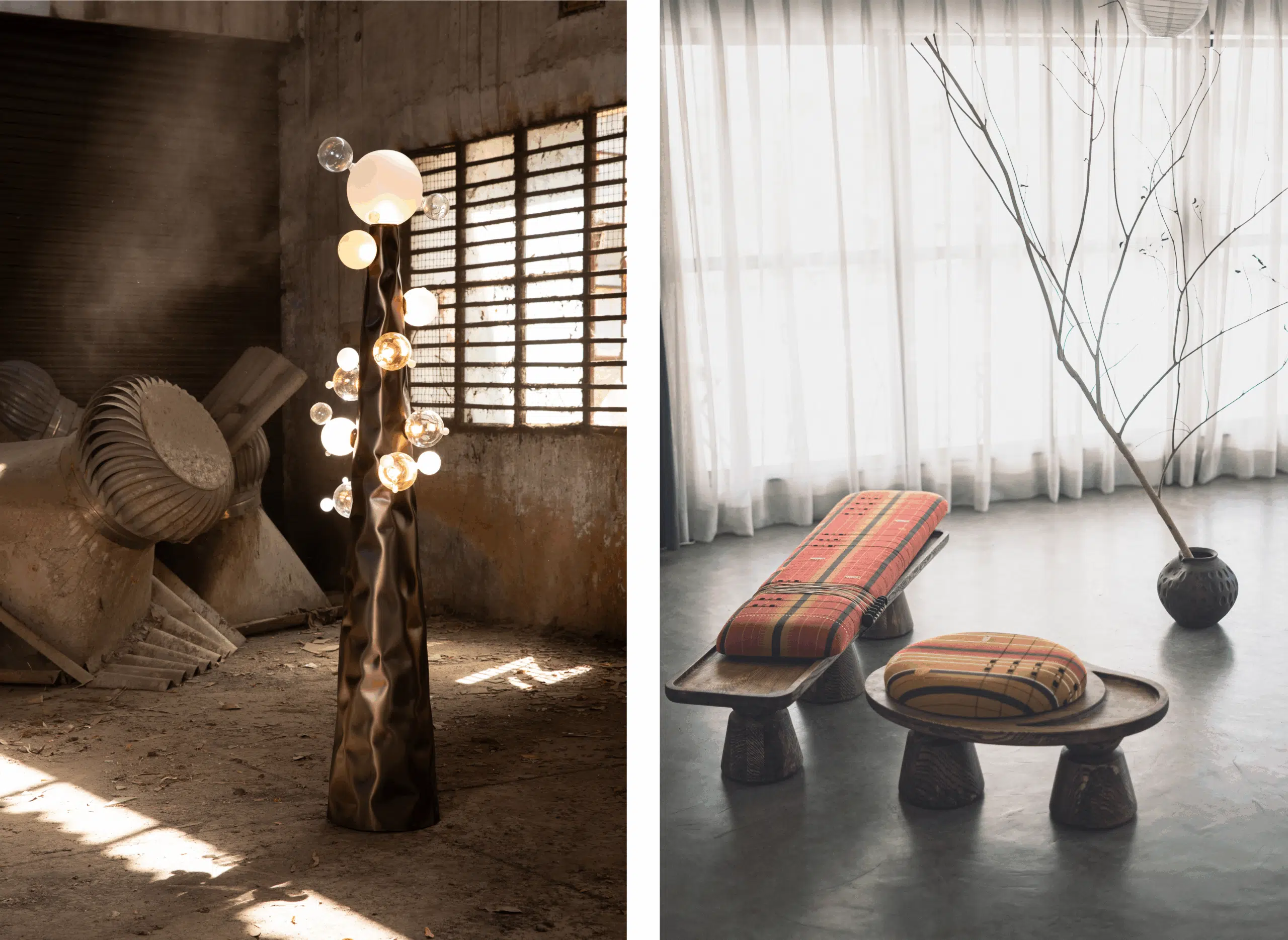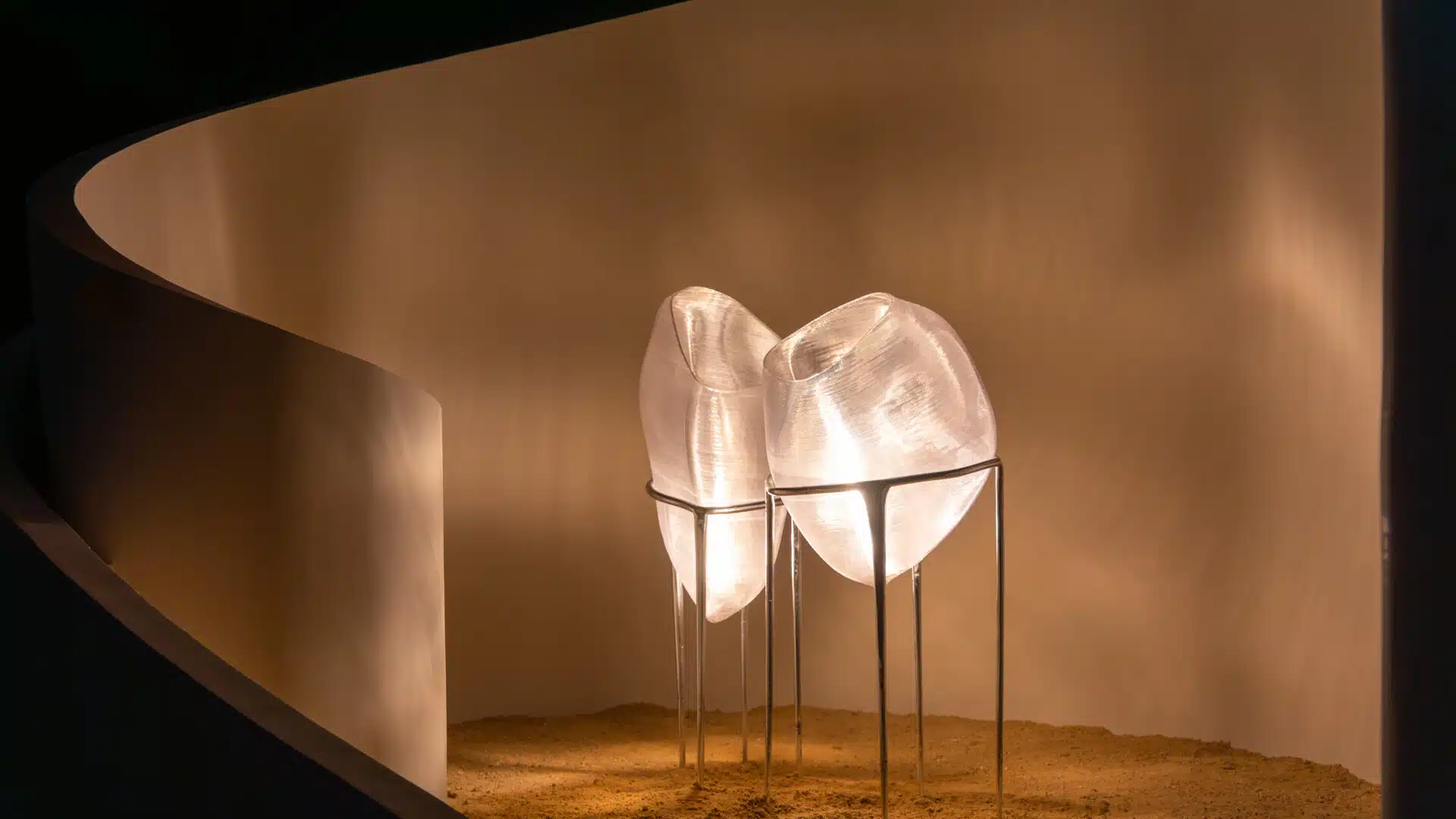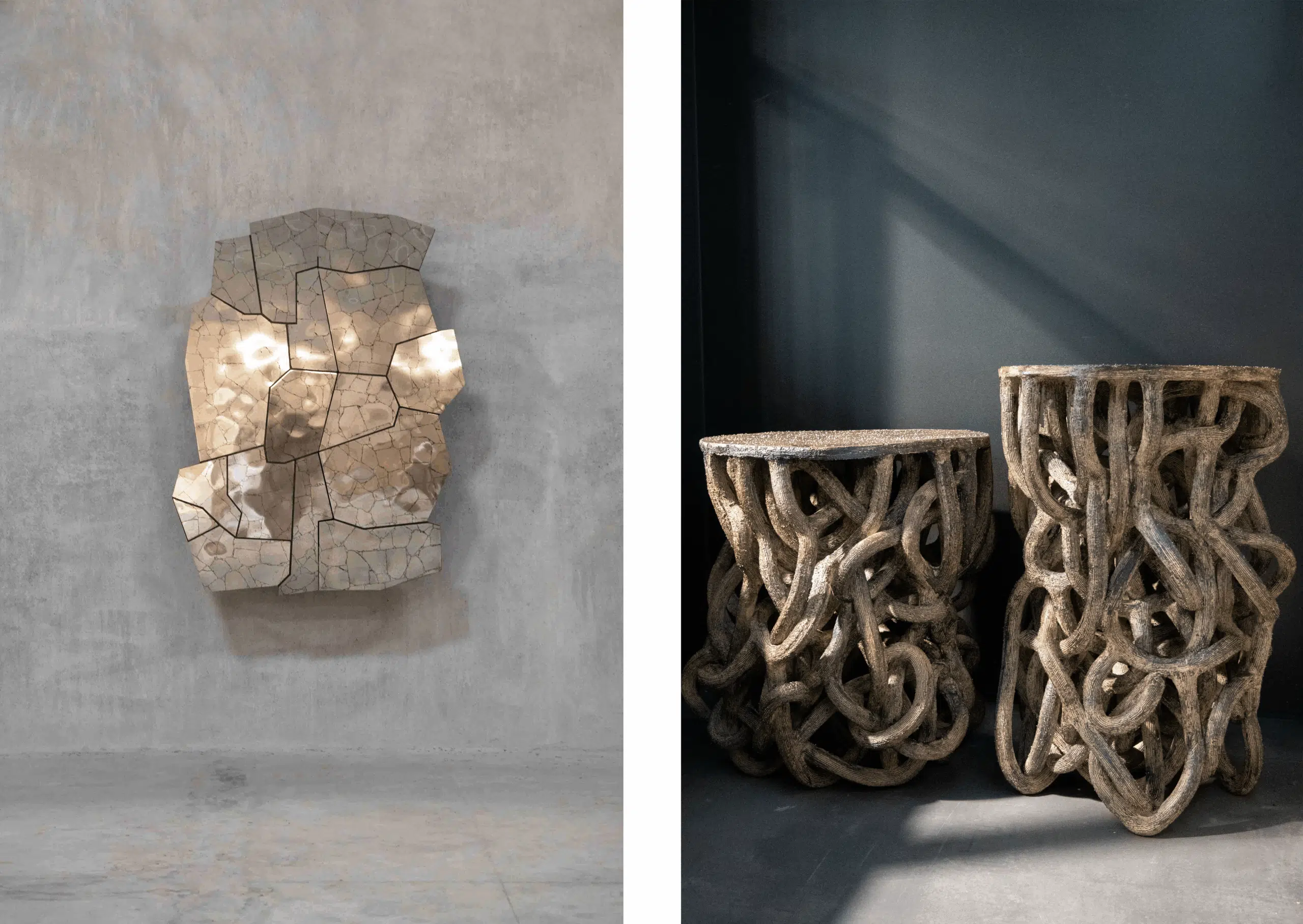From Art Basel Miami to London Design Week — Alaiia Gujral has been making waves in the design world as a curator and creative director. Her philosophy? Design is not just about objects — but rather about creating environments and networks that inspire, challenge and elevate.
At the heart of her creative practice is Future Galerie, a multidisciplinary platform that serves as both a stage for emerging talent and a workshop for pushing boundaries. Through her work, Alaiia is dedicated to shining a spotlight on emerging designers who experiment with traditional techniques, breaking new ground in an industry that has often lacked institutional support for young voices. Her latest curatorial project, Shifting Horizons continues in this spirit, presenting young Indian designers at the India Art Fair 2025, highlighting contemporary interpretations of India’s craft traditions.
In this conversation, Alaiia tells us more about her creative lineage, passion for collaboration and advice for young collectors.
 ALAIIA GUJRAL. COURTESY OF ALAIIA GUJRAL
ALAIIA GUJRAL. COURTESY OF ALAIIA GUJRAL
What was the first object or experience that sparked your interest in design?
It was the work of my favorite designer, Daniel Arsham. In 2004, when Arsham joined Perrotin Gallery, he created a striking wall sculpture of a human figure stretched behind fabric. Upon seeing this work, I understood — for the first time— the synergy between art and design. There is a seamless line connecting the two worlds. It inspired me to expand my perspective beyond the world of art, opening up a dialogue between the art and design disciplines that continues to influence my work.
Can you tell us more about growing up in a family rooted in the Indian art and culture world, and how it has influenced the way you create today?
I grew up in a family that is deeply connected to Indian art and culture. This shaped the way I view creativity and its impact. My grandfather, Satish Gujral, approached his work with a unique vision that combined courage and fearless reinvention. My parents, Feroze and Mohit Gujral, surrounded me with art and architecture — emphasising the importance of supporting creative voices. This environment instilled a deep respect for my heritage and a drive to reimagine its relevance in contemporary contexts. This foundation fuels my work at Future Galerie, where I strive to create spaces that highlight emerging talent, encourage collaboration and push the boundaries of what design can be.
“My work centers on building platforms where creatives can experiment, exhibit and connect with engaging audiences.”
Your work spans art, creative direction and design. How do these various disciplines feed into each other for you?
While at the School of the Art Institute of Chicago (SAIC), I learned to approach creativity with curiosity and multidisciplinarity. Art inspires new ideas and abstract thinking, while design brings those ideas to life with structure and practicality. At Future Galerie, for instance, I combine these perspectives to create immersive projects, like installations that connect cultural narratives with modern aesthetics or collaborations that merge traditional techniques with contemporary design. My studio practice focuses on translating personal and cultural experiences into objects that feel both meaningful and functional.
Can you tell us a bit about Future Galerie and your interest in creating new kinds of infrastructure and networks to support future creatives?
Future Galerie is about redefining how art and design are experienced. At Art Basel, in 2022, we collaborated with Daniel Arsham to create an exhibition that merged conceptual art and innovative spatial design. On the other hand, projects with brands like Nike and Adidas focused on bringing fresh perspectives to product launches and immersive experiences. My work centers on building platforms where creatives can experiment, exhibit and connect with engaging audiences. It’s about creating opportunities for innovation and amplifying new voices in ways that inspire and challenge the traditional norms of creative industries.
 SHIFTING HORIZONS FEATURES A WIDE RANGE OF WORK — FROM REFLECTIVE METAL SCULPTURES FROM NITUSH AND AROOSH TO HANDWOVEN TEXTILES ON MINIMALIST FURNITURE FROM SHIVANGI VASUDEVA, AMONGST OTHER DESIGNERS. LEFT: WORK BY NITUSH AND AROOSH, RIGHT: WORK BY SHIVANGI VASUDEVA; COURTESY OF THE DESIGNERS
SHIFTING HORIZONS FEATURES A WIDE RANGE OF WORK — FROM REFLECTIVE METAL SCULPTURES FROM NITUSH AND AROOSH TO HANDWOVEN TEXTILES ON MINIMALIST FURNITURE FROM SHIVANGI VASUDEVA, AMONGST OTHER DESIGNERS. LEFT: WORK BY NITUSH AND AROOSH, RIGHT: WORK BY SHIVANGI VASUDEVA; COURTESY OF THE DESIGNERS
How did you go about curating Shifting Horizons for India Art Fair 2025? What are the kinds of design processes and philosophies that the section highlights?
Shifting Horizons is about creating a platform for an emerging wave of designers in India who are creating their own paths, often without institutional backing. Unlike in many countries where a robust gallery culture actively nurtures and represents young design talent, India faces a significant gap in infrastructure to spotlight its emerging creators.
My aim with Shifting Horizons was to spotlight these designers like a gallery might but without the formal aspect of representation. I sought designers who not only reinterpret Indian traditions through innovative techniques and materials but also have the courage to experiment fearlessly and carve out unique paths to success. This curation celebrates individuality and fosters a dialogue that pushes the boundaries of Indian design on a global stage.
“Young collectors should start with curiosity and trust their instincts. Look for pieces that not only spark joy but also have compelling stories — in how they were made, the processes behind them and their cultural contexts.”
What do you see as the future of design — and design of the future — in the Indian context?
I believe the future of design is inherently interdisciplinary. The boundaries between art, design and experience blur, creating something truly innovative. In India, this means breaking away from traditional expectations and pushing the fine line between functionality and artistic expression. People today value individuality and are drawn to bold work — objects that stand out and tell a story. I envision accessibility as a transformative shift in the Indian design landscape, where contemporary aesthetics and refined taste, once considered exclusive or out of reach, are now becoming increasingly attainable for a wider audience. I’m thrilled to spotlight the surge of creativity emerging from India’s design landscape and contribute to a movement that redefines the possibilities of design, both within local contexts and on the global stage.
ALAIIA GUJRAL’S VISION FOR DESIGN LIES AT THE CROSSROADS OF HERITAGE AND INNOVATION, WHERE AGE-OLD CRAFTSMANSHIP IS REINVIGORATED WITH MODERN AESTHETICS IN A BALANCE OF FUNCTIONALITY WITH ARTISTRY. LEFT: WORK BY SAGE LIVING; RIGHT: WORK BY SHAROL AHLUWALIA; COURTESY OF THE DESIGNERS
What advice do you have for young collectors? What should one be looking out for?
Young collectors should start with curiosity and trust their instincts. Look for pieces that not only spark joy but also have compelling stories — in how they were made, the processes behind them and their cultural contexts. Focus on emerging designers who are creating bold, meaningful work and are willing to collaborate, put themselves out there and maintain a strong social presence. These designers have the drive to grow, continuously explore their skills and carve out unique paths to success. Remember, collecting isn’t merely an investment; it’s about building a relationship with the objects you choose to bring into your space and supporting the creative journeys of designers whose work truly resonates to you.
Which designer, living or dead, would you invite for dinner? Where would this dream date take place? What would you eat?
I would dine with Tadao Ando and François Pinault, surrounded by Pinault’s masterful curation at Le Bourse de Commerce in Paris. The space, with its seamless blend of historical architecture and contemporary architecture, would set the perfect tone for a conversation about the future of art, design and the environments we create to experience them. With Ando’s vision for the physical and immersive aspects of architecture and Pinault’s insight into the evolving nature of curation, we could explore how these disciplines will continue to shape culture and connection. Over the simple Indian meal of rajma chawal, it would be a moment where creativity, tradition and forward-thinking ideas come together in the most inspiring way.
Alaiia Gujral is a creative director, artist/designer, curator and founder of Future Galerie. Shifting Horizons, a special presentation of young Indian designers, curated by Gujral will be shown at India Art Fair 2025.



